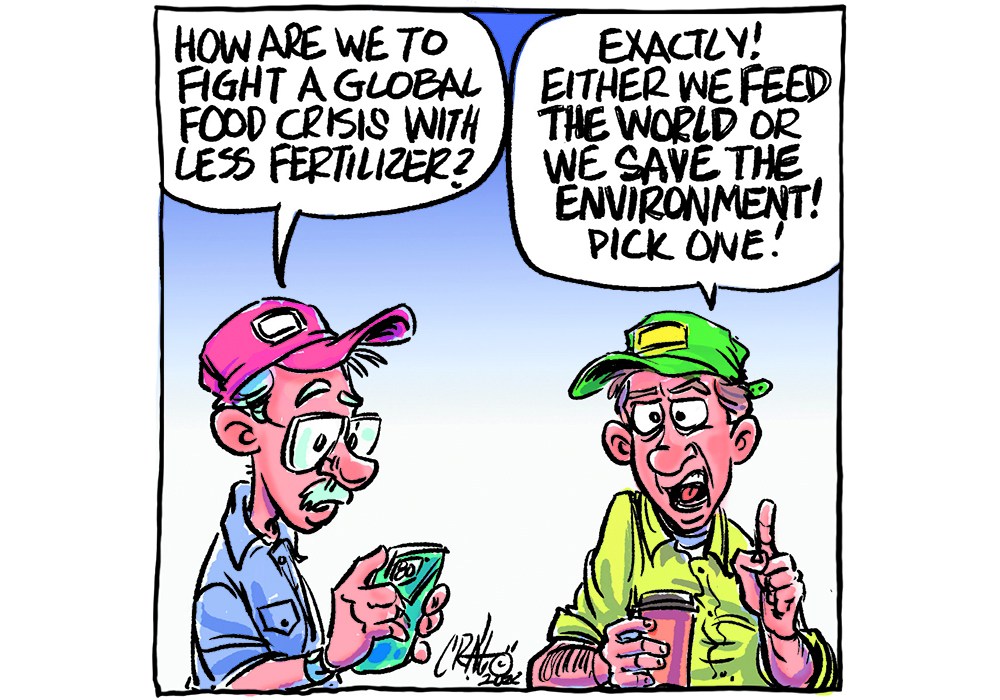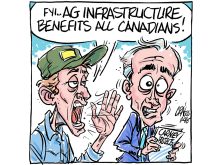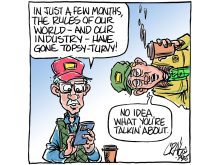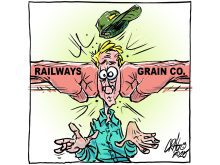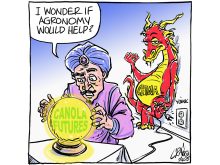The agricultural deal the federal government brought was too tasty a meal to spit out. But it was still hard to swallow for some provincial leaders after meetings in Saskatoon last week, not to mention some lingering bitterness once everyone was done at the table.
The new federal, provincial and territorial agreement for Canadian agriculture put more money into critical areas of our farming world. But the rhetoric began to fly before the ink was dry and most of it related to something that wasn’t even on the meeting agenda.
Read Also

Kochia has become a significant problem for Prairie farmers
As you travel through southern Saskatchewan and Alberta, particularly in areas challenged by dry growing conditions, the magnitude of the kochia problem is easy to see.
Claiming profound disappointment in the federal government for setting an “arbitrary goal” for 30 percent fertilizer emissions reductions in the coming eight years, agriculture ministers from Alberta and Saskatchewan said consultations on a potential reduction target should have taken place before the figure was decided. They said the current world food shortage should be a greater consideration and that cuts to crop production emissions could wait.
The rest of the menu was more to some ministers’ tastes. The cost-shared AgriStability compensation rate will rise to 80 percent from 70, which is attractive to producers and ag ministers not from the Prairies.
That commitment by the federal government will bring some smiles to farmers’ faces and, along with potentially higher yields this year, should increase uptake of the program. Governments of the prairie provinces were not keen on the increase because they have larger farming sectors, which means provincial treasuries will be tapped to a greater extent. That could in turn mean fewer dollars for other programs, which might not sit well with urban and non-farming voters, even as growers appreciate business risk management improvement.
Mid- and larger-sized farmers will find environmental goals are now tied to some BRM tools and money. They will need an environmental farm plan before being eligible to claim federal cash from AgriInvest. Environmental farm plans were already a requirement for access to federal and provincial grant programs, so while there might be some push-back to this expansion, it shouldn’t be a step too far for many.
The two levels of government committed to an additional $500 million in new money, on top of the $2 billion the relationship had before last week. This should increase investments in research, trade promotion, public awareness of agriculture and something called a Resilient Agricultural Landscape Program (RALP).
The latter was short on details but might be aligned with another ill-defined area: sustainability, which is liberally sprinkled throughout the new agreement.
Does all the talk about sustainability in the new five-year deal refer to farmers’ sustainability, governments’ sustainability or that of the environment? It might be a combination of all three if the parties can work together on a definition.
If they keep chewing on one another in the early days of the arrangement, there will be winners and losers at this table.
Sustainable farmers tend to lead to sustainable environments and those likely create a path to a resilient landscape, given they have the right tools and incentives. Maybe that’s where RALP will come in.
If we can all figure out how this deal works to keep producers fed, functioning and serving the planet, the new arrangement might set a better table for Canadian farmers for the next five years.
Karen Briere, Bruce Dyck, Barb Glen and Mike Raine collaborate in the writing of Western Producer editorials.



